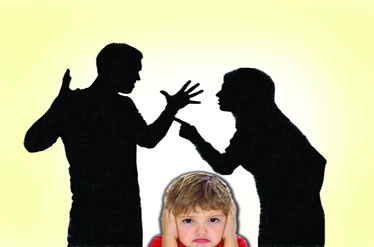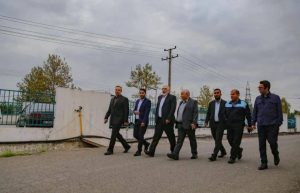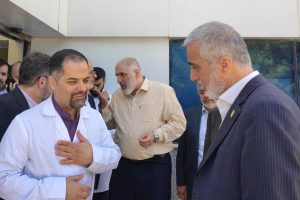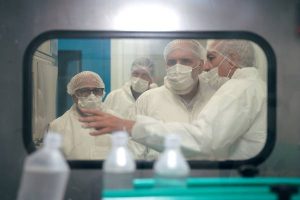
فهرست مطالب
برای امتیاز به این نوشته کلیک کنید!
[کل: 0 میانگین: 0]
Psychotherapy: Breaking Trauma Cycle
Barekat Health & Pharmaceutical Group: In recent years, the term trauma has evolved beyond its traditional association with sudden, catastrophic events. Emerging research in psychology and neuroscience reveals that psychological injuries—particularly unresolved anxieties—can unconsciously pass from one generation to the next.
Parents who experienced emotional instability, war, poverty, neglect, or severe psychological stress during their own childhoods may unknowingly transmit patterns of anxiety, fear, or distrust to their children.
This transmission occurs not only through behavior but also at a biological level. From an epigenetic standpoint, environmental stressors can alter gene expression, laying a neurological and psychological foundation for anxiety, depression, or aggression in the next generation.
This report offers a detailed, multidimensional analysis of this complex and often hidden phenomenon.
What Is Trauma—How Does It Become “Intergenerational”?
Trauma is a psychological experience that overwhelms an individual’s ability to cope, leaving a lasting imprint on the mind. When a traumatized person becomes a parent, many of their unconscious emotional and defensive patterns are passed down to their children.
Intergenerational trauma is not passed through genes alone, but through body language, attachment styles, worldview, patterns of anxiety—and even through silence. A child raised in a home with anxious or emotionally distant parents may never experience direct harm, yet still feel fundamentally unsafe. This form of trauma transfer is often invisible, unspoken, and deeply systemic.
Parental Anxiety in Shaping a Child’s Personality
Parents suffering from chronic anxiety often create unstable environments for their children. They may be overly controlling, excessively cautious, or emotionally withdrawn. Children raised in such conditions tend to exist in a state of “hyper-vigilance” or emotional confusion.
These environments breed generalized anxiety, behavioral obsessions, or emotional dysregulation in children. Many adults who struggle with anxiety disorders trace their roots back to a childhood fraught with insecurity—an insecurity instilled by caregivers who themselves were victims of trauma.
Epigenetics & Biological Transmission of Trauma
The science of epigenetics demonstrates that extreme environmental experiences—such as war, famine, or forced migration—can alter the molecular structure surrounding DNA. These changes affect how genes are turned on or off and may be passed on to future generations.
For instance, children born to mothers with PTSD often show heightened anxiety or sensitivity to stress. In this way, the biological memory of trauma may be stored in the body and influence the next generation—without words, without re-experiencing the original events.
Family, Silence & Taboo of Hidden Trauma
In many families, painful past experiences are silenced. Children grow up unaware of their parents’ traumas but sense them in emotional outbursts, unexplained tensions, or behavioral avoidances.
Silence becomes a form of unconscious transmission. Children interpret cues and may even blame themselves for the emotional climate. Such concealment blocks psychological processing and plants the seeds of chronic anxiety in the child’s subconscious.
School & Society: Trauma Reproduction or Repair?
The broader social environment—especially schools—can either perpetuate or repair trauma. Educational systems that are built on stress, humiliation, and excessive competition tend to exacerbate existing family trauma.
On the other hand, when schools provide a safe and supportive space, they can serve as healing grounds. Empowered teachers, trained counselors, and mental health-oriented curricula can disrupt the chain of trauma transmission and open a n
ew path for children.
Psychotherapy: Breaking Trauma Cycle
Psychotherapy remains one of the most effective tools for identifying and interrupting the transmission of trauma. Trauma-focused therapies such as EMDR or Cognitive Behavioral Therapy (CBT) enable parents to confront and reconstruct their own psychological wounds.
Training in conscious parenting, emotional regulation, and secure attachment also equips caregivers to break the trauma cycle. Sometimes, the healing of one generation becomes the turning point for generations to come.
What Can Be Done? Personal, Family & Social Responsibility
Preventing intergenerational trauma is not solely the responsibility of therapists. Public awareness, parent education, cultural reform around shame and judgment, and supportive infrastructure for families are all essential parts of the solution.
Media, schools, and mental health policymakers must take active roles in raising awareness and empowering families. Speaking instead of suppressing, listening instead of judging, and empathizing instead of pressuring—these are the first steps in healing trauma.
Conclusion
Intergenerational trauma flows like an invisible wound through the fabric of family life. The only way to heal it is through awareness, courageous confrontation of pain, and intentional efforts to break the cycle. The children of today will become the parents of tomorrow.
If we fail to recognize and reform destructive patterns from the past, future generations will remain trapped in an endless loop of anxiety, insecurity, and suffering. Yet there is hope. With education, acceptance, and treatment, we can break this chain—and build a safer, healthier future for those who come after us.
برای امتیاز به این نوشته کلیک کنید!
[کل: 0 میانگین: 0]
مطالب مرتبط
-
Barkat Group specialized meeting

-
Safa Appointed as Barekat General Director

-
Barekat Health & Pharmaceutical Group at the 10th Iran Pharma Exhibition

-
Ali Safa visits Sobhan Oncology & Sobhan Darou

-
Pirsalehi & Safa visit Saman Daroo 8 Knowledge-based Company

-
Barekat Managing Director Visits Samen Pharmaceutical Company

-
Honoring Pharmacists’ Day

-
Barekat Top Executives Visiting to Barekat Hospital

